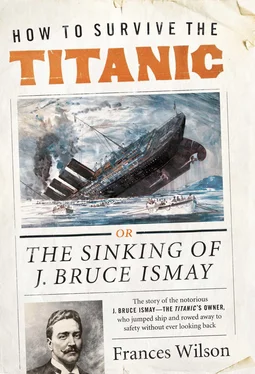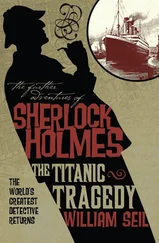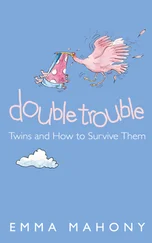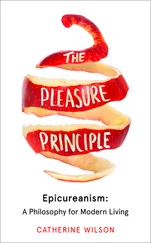The culmination of Florence Ismay’s unhappiness came in the summer of 1900 when, heavily pregnant, she went into labour with her fifth child (she and Bruce now had Margaret, Thomas and Evelyn) during a stay with the recently widowed Margaret at Dawpool. Not wanting the bother of a birth in her house, Margaret sent Florence back to Sandheys in a horse and carriage. During the journey back, a baby girl was stillborn and Florence never forgave her mother-in-law; nor did she forgive Bruce for allowing such a thing to happen.
Florence’s wretchedness is vividly described by her granddaughter, Pauline Matarasso, in a memoir of her childhood, A Voyage Closed and Done:
The Mossley Hill years were not happy ones for my grandmother: conventional, unimaginative but fun-loving, she was made wretched by what passed for intimacy with her husband and by the tedium of provincial life… Florence retained a lasting nostalgia for her childhood home, which translated itself into a refusal to eat anything she hadn’t eaten in her father’s house: fifty years later this still ruled out a number of staples, notably sausages. Brought up to compliance and respectful of all conventions, she released the bully in her husband who took pleasure in snubbing her at dinner parties, leaving her floundering and the guests embarrassed. 26
The bullied son had become the bullying husband and father, and Florence ‘slowly created a life for herself in the large spaces which her husband left her’. Ismay gave her an allowance with which she ran the home and garden and looked after the needs of the children and servants without having to bother him. She arranged the household, Florence later told Wilton Oldham, ‘to revolve around Bruce; everything was done for his comfort and convenience, his tastes and preferences were studied meticulously and put before all others’. Because Ismay liked cold turkey, cold turkey was served every night; because Ismay did not like the noise of children, except for that of Margaret, they were housed in a specially built wing, separated from their parents by two green baize doors. In an unsigned document written in 1936, a family friend made an attempt to describe and explain Ismay. ‘Treated with undue severity in his youth, he makes no allowance for its follies and ignorances. Nor has he learned that repression is not the way to encourage development in the young.’ His ‘otherwise fine character is spoiled by bursts of irritability and unreasonableness’ which he directs against ‘those of whom he is fondest’. Had Ismay’s behaviour, the writer concludes, ‘been commented on by the sweetest and best of women in their early married life, a good deal of suffering might have been avoided’.
Florence collected antique furniture and nurtured her brood, especially Tom who, after contracting polio as a baby, had become ‘the butt of his father’s sarcasm’. 27In 1905 she purchased her first motor car, and owing to Ismay’s dislike of driving, she began to enjoy motoring holidays alone. To provide some companionship for his daughter, George Schieffelin had sent over her rebellious, voluble, horse-loving sister, Constance. ‘Con’ was liked by everyone but her charms were particularly admired by Ismay’s youngest brother, Bower, the only male twin of the two sets in the Ismay family. Before either had time to discover they had nothing in common beyond being related already, Bower and Constance were married. It was 1900 and a family of doubles had doubled itself even further.
Following a series of heart attacks, Thomas Ismay had died aged sixty-two in November 1899, one year before the reign of Queen Victoria came to its end. He lived just long enough to see, in January, the launch of the Oceanic, whose magnificent interior had been designed by Shaw. The ‘crack’ liner that was to be a monument to himself and his firm became instead his memorial. Visitors from Britain, Germany and America came to watch the Oceanic launched, and a special train brought sightseers from all over Ireland to attend the occasion at Harland & Wolff. When she then steamed up the Mersey, Ismay Senior, now seriously ill, went out in the tender to meet her; she was the finest vessel he had ever seen. The Oceanic was also admired by the Americans, especially the Wall Street monarch, J. Pierpont Morgan.
Thomas Ismay had created one of the world’s most profitable shipping lines; his fortune was equivalent to $40 million and his weight in the shipping world was such that his inconsolable widow received a message of condolence from the Kaiser. ‘There is terrible, terrible blank in the house,’ Margaret wrote in her diary following her husband’s death. ‘Shall we ever be able to live without him. All my life was centred in him, and as the time goes on it can only get worse for me.’ 28On the day of Thomas Ismay’s funeral, the city of Liverpool went into mourning with flags flying at half-mast. His career was compared by one journalist to a ‘staircase ascending upward, straight, regular, well ordered, firm in its setting, perfect in its surroundings’, 29and his gravestone in the churchyard at Thurstaston village was inscribed with the legend: ‘Great thoughts, great feelings came to him like instincts unawares.’ It is a curiously pertinent inscription, for the son as much as for the father.
The first decision that Bruce Ismay made as the new head of the White Star Line was to sell it. In 1901 he was approached by J. Pierpont Morgan who, having arranged the mergers that formed General Electric, Northern Securities and the Steel Corporation, was now looking to monopolise the North Atlantic trade by bringing the various American and European steamships under the ownership of one monster trust. The British shipping industry, which had thrived during the Boer War, was currently crippled by competition; should Morgan control the shipping lines, he could fix the fares at a handsome profit. He therefore offered the White Star shareholders ten times the value of the line’s earnings for 1900, a particularly lucrative year. Ismay insisted on a further $7 million in cash and Morgan eventually bought White Star for $35 million. The ships would continue to sail under a British flag and to employ a British crew, but they would be owned by Americans. William Imrie, James Ismay and a third partner, W. S. Graves, would retire and Ismay continue as managing director and chairman of the company, with Harold Sanderson at his side.
In December 1902, White Star joined the American Line (formally the British Inman Line), the Red Star Line, the Dominion, the Atlantic Transport and the Leyland Line in the International Mercantile Marine, known as the IMM, and Ismay, Imrie & Co. became, as Bruce Ismay put it, ‘a dead letter’. 30James Ismay, whose wife, Lady Margaret Seymour, had recently died in childbirth, was only too pleased to throw in the towel and he moved his young family down to Dorset where he became a successful and much-loved country squire. He replaced his tenants’ run-down cottages with large black and white timbered houses in the style of Norman Shaw, and farmed pigs, whose lard and bacon were supplied to the White Star liners. Bower was interested only in horses and so long as his hobby was funded, he did not much care who owned the White Star Line. The female members of the Ismay family were less happy about the turn in events. ‘This ends the White Star Line,’ Margaret wrote in her diary, ‘in which so much interest, thought, and care was bestowed and which was my dearest one’s life’s work.’ Because a clause in Thomas Ismay’s will instructed that none of his daughters should invest in any other shipping company, the sale of the White Star Line meant that Ethel, Ada, Dora and Charlotte were each forced to relinquish their inheritance.
Both taciturn sons of rich fathers, J. Bruce Ismay and J. Pierpont Morgan were cut from the same cloth. ‘Money Talks but Morgan doesn’t’, wrote the Tribune after a dinner held in Morgan’s honour; his study contained a plaque which read Tense moult, Parlepeu, Ecritrien (Think a lot, Say little, Write nothing). Bruce Ismay, wrote a reporter in the Northern Whig in February 1904, ‘is one of the silent ones of the earth. Whether he be a genius or not, one may be sure that garrulity will never be his undoing.’ The millionaires presented themselves as two halves in a marriage of equals, and while Ismay insisted that the name of the IMM be absent from bills of lading of the White Star Line and that the White Star offices occupy an independent building of their own, it was clear that Thomas Ismay’s company had become one of Morgan’s costly possessions, to be counted along with his fabulous yacht, the Corsair, his famous library, and his vast collection of art and gems. 31Morgan, according to his British partner, Clinton Dawkins, was a ‘physical and intellectual giant’, a man with ‘something Titanic about him’. 32Compared by a Yale professor to Alexander the Great, and described by B. C. Forbes, founder of Forbes magazine, as ‘the financial Moses of the New World’, Morgan was an imperious, intolerant, irascible robber baron, the ‘boss croupier’ of Wall Street who subjected the country’s entire economy to the ‘psychopathology of his will’. He now controlled not only the American railroads, but also his own fleet of luxury liners to ferry him across the Atlantic. It was Morgan rather than Ismay who was henceforth treated on board White Star ships as the owner; before the Titanic was even built, Morgan selected from the plans which suite of rooms would be his.
Читать дальше












